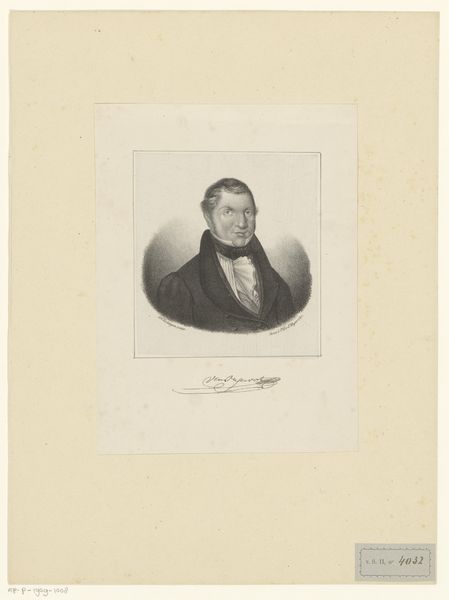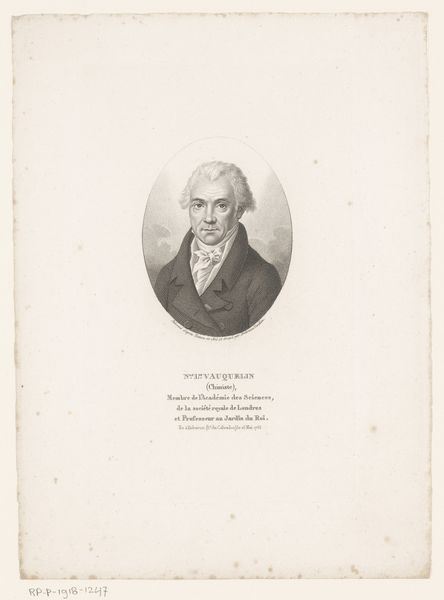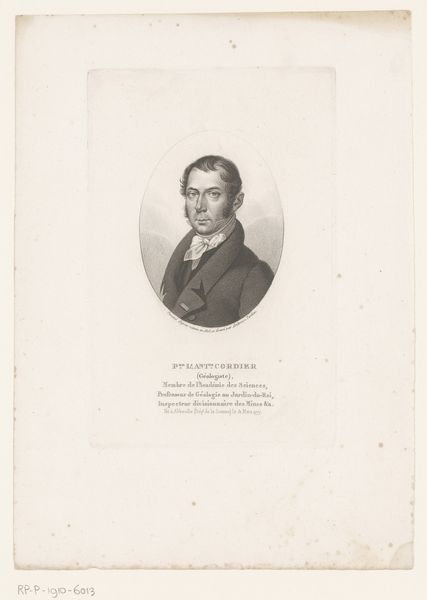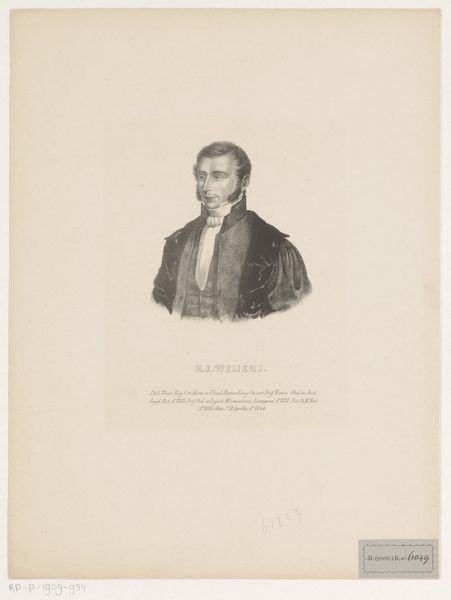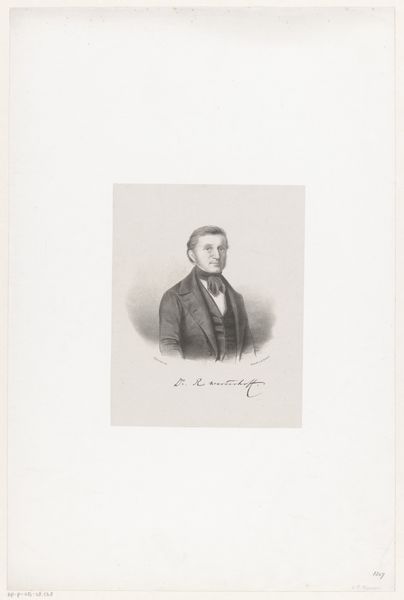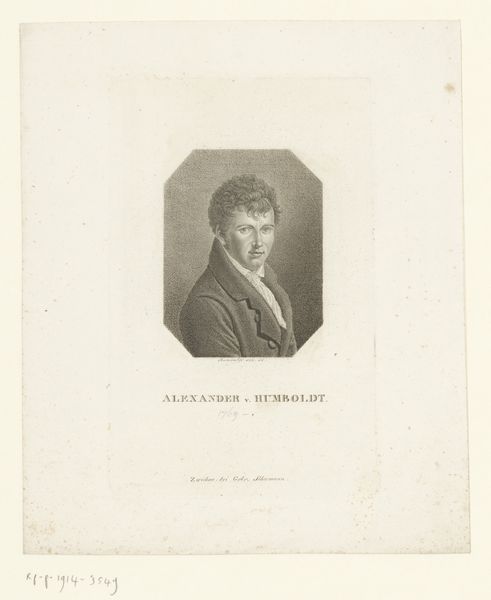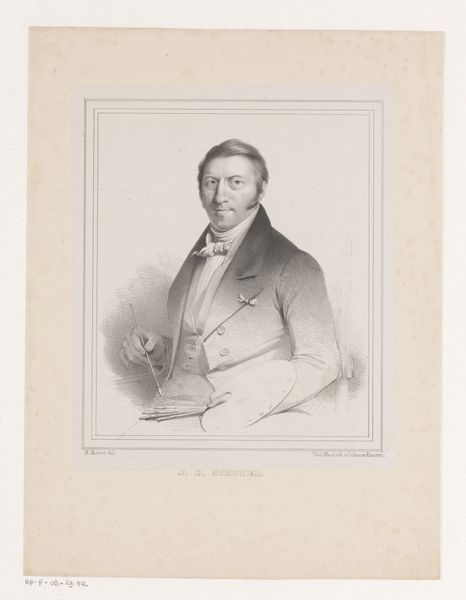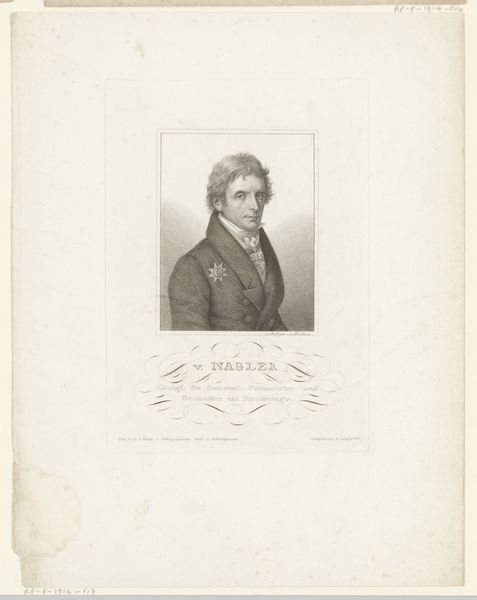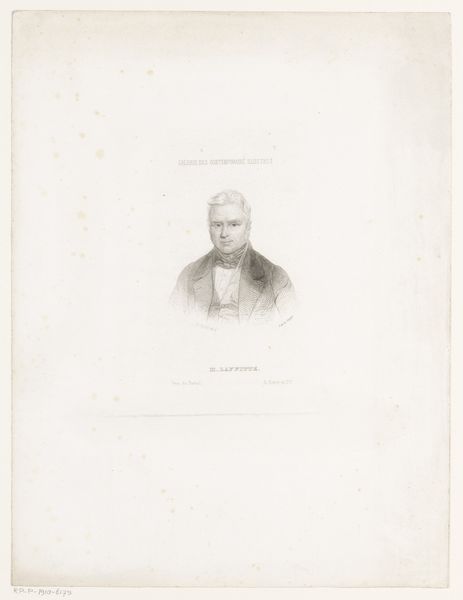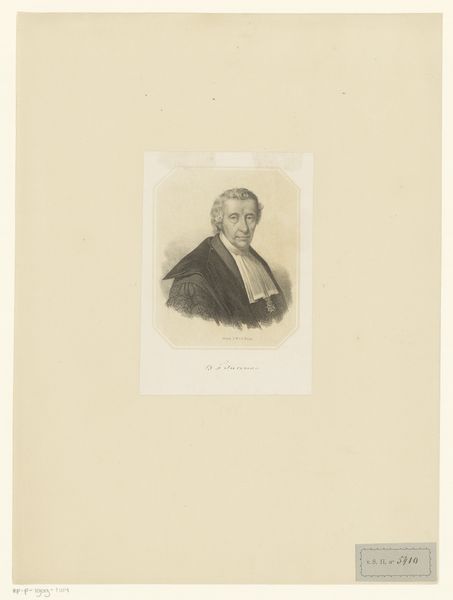
print, engraving
#
portrait
#
neoclacissism
# print
#
engraving
Dimensions: height 181 mm, width 128 mm
Copyright: Rijks Museum: Open Domain
Editor: This is "Portret van Johann Heinrich Pestalozzi," a print by Friedrich Wilhelm Bollinger, created between 1818 and 1832. It's quite striking despite being an engraving. The man’s face seems to hold so much depth. How do you interpret this work? Curator: Let’s consider the formal elements. Note the use of line – the fine, deliberate hatching which builds up tonal variation and defines the sitter’s features. Observe the strong contrast that articulates the face and creates a sense of presence within the octagonal frame. How does the geometric shape of the frame impact your reading? Editor: I suppose it isolates him, making him the focal point but also a sort of specimen. It is, after all, a Neoclassical portrait so the framing makes it seem rather objective. Curator: Precisely. The lack of background allows us to consider only the intrinsic forms: the contour of the head, the drape of the clothing, and the interplay of light and shadow across the planes of the face. Consider also the restricted palette and the absence of strong affect. Editor: So the artistic choices, rather than the subject himself, carry the meaning? The controlled lines, the stark contrasts, the isolation within the octagonal frame...it’s all about the artistic effect and process? Curator: Exactly. By examining these formal properties, we unlock the print's aesthetic structure. Each element works in harmony to produce this work, its intrinsic essence. Editor: That's given me a fresh way of regarding portraiture. I see how focusing on form allows a unique dialogue with an image, apart from historical meaning. Curator: And through that, we grasp the essence of its visual power.
Comments
No comments
Be the first to comment and join the conversation on the ultimate creative platform.
